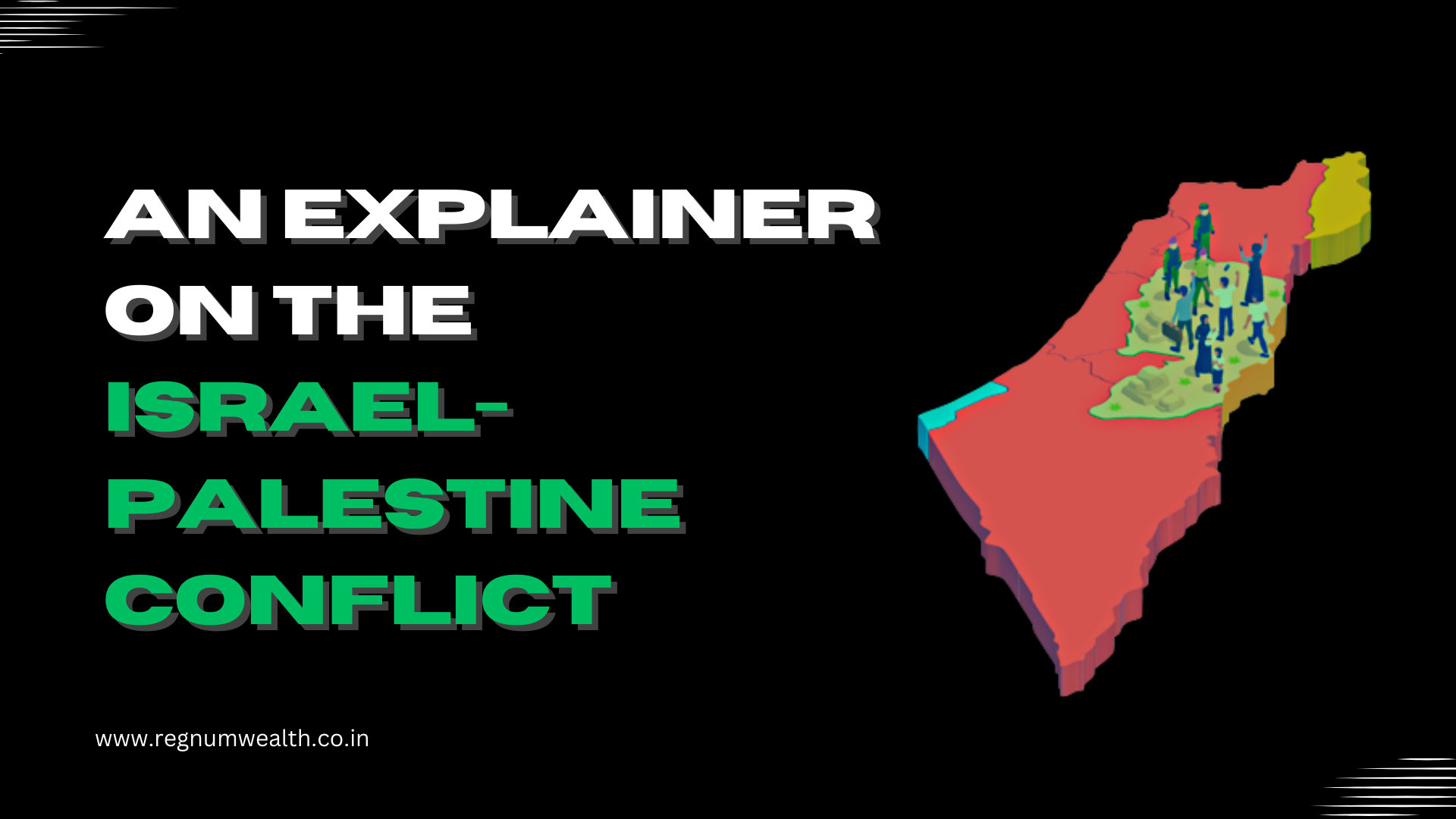
In a recent and tragic turn of events, the region witnessed a flare-up of violence on Saturday as Hamas, a militant group, launched attacks on Israel, leading to the loss of numerous innocent lives. In response, Israel carried out its own airstrikes, resulting in casualties, including civilians. This ongoing conflict has brought immense sorrow not only to the region but also to the world. The hope, of course, is for this devastating cycle of violence to come to an end as soon as possible.
But how did this enduring conflict come to be, and what economic consequences has it wrought? In today’s discussion, we aim to provide an overview of this century-old struggle, acknowledging that we are not geopolitical experts but will endeavor to simplify the complexities for your understanding.
The Origins of the Conflict
The roots of the Israel-Palestine conflict date back to 1917 when a brief, 67-word letter by Britain’s then foreign secretary, Arthur Balfour, altered the fate of the Palestinian region forever. Within this letter, Britain pledged to establish a “national home for the Jewish people” in Palestine, a commitment aimed at assisting Jewish refugees escaping persecution in Europe.
The key question was how Britain could enforce this commitment. The British had colonized the Palestinian territory and exerted total control. However, this move left the 94% Arab population in Palestine feeling deeply aggrieved, as they perceived their land was being taken from them by force. This sense of injustice set the stage for early conflicts between Arab and Jewish communities.
Fast forward to 1947 when Britain relinquished control of the territory, and the United Nations stepped in. Their plan was to divide the land into two states, Palestine and Israel, with Jerusalem designated as an international city. This proposition, seemingly reasonable on the surface, sparked further tensions as the Arabs protested the larger portion allocated to the Jews. This discontent culminated in a war, resulting in Israel gaining control of more territory, Egypt taking over Gaza, and Jordan occupying the West Bank.
The Struggle Intensifies
In 1967, another Arab-Israeli war erupted, during which Israel further consolidated its dominance over Gaza and the West Bank, nearly extinguishing the Palestinian state. The Palestinian people regarded this as an unlawful occupation, leading to varied responses, from diplomacy to violent resistance.
In the 1980s, one militant group, Hamas, emerged as a prominent player in the conflict. They initiated a proxy war against Israel, while numerous countries made efforts to broker peace between Israel and Palestine, seeking an end to the ceaseless strife.
In the 1990s, Israel yielded to international pressure, transferring limited control of the West Bank and Gaza to an interim Palestinian government. However, this did not quell intermittent conflicts, as the Arab population still claimed the territory as rightfully theirs. When Hamas assumed control of Gaza in 2006, Israel responded with tightened restrictions, effectively isolating the area from the rest of the world by closing land, sea, and air routes. As a result, Gaza’s economy suffered a severe blow.
Economic Impact
The economic repercussions in Gaza have been profound. According to the United Nations Conference on Trade and Development (UNCTAD), Gaza has the world’s highest unemployment rate, with over 50% of its population living below the poverty line. From contributing 31% to the Palestinian economy in 2006, Gaza’s share dwindled to just 18% in 2018. From an economic standpoint, the losses incurred between 2007 and 2018 were estimated at a staggering $8 to $16 billion.
A Glimpse at the Present
In recent years, the concept of “economic peace” has gained traction as a potential solution. The region holds significant oil and natural gas reserves in disputed territories, estimated to be worth approximately $524 billion. In 2020, the United States made unprecedented strides by brokering the Abraham Accords, bringing Israel together with four Arab nations: UAE, Bahrain, Morocco, and Sudan. These accords addressed the unique interests of each nation, aiming to enhance trade and foster economic prosperity, particularly for Israel.
While some estimates predicted a rise of over 2% in Israel’s GDP, these developments somewhat sidelined the concerns of Palestine, as it remained a peripheral participant in these discussions. The recent violence, however, has brought the Palestinian issue back to the forefront.
Global Implications
As the conflict unfolds, there is the question of whether it will have a broader impact on the world. Israel and Palestine are not major oil producers, but oil prices have already surged due to various factors, including the belief that Iran supported Hamas’ attacks. Iran is a significant oil producer and is strategically located near the Strait of Hormuz, a critical passage for 37% of all sea-based oil exports. If regional militants target this passage, it could further disrupt oil prices.
In these uncertain times, we can only hope that reason prevails in the region, and the conflict subsides, sparing innocent civilians the horrors of senseless violence. Until then, the world watches, holding its breath.




